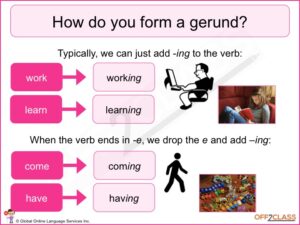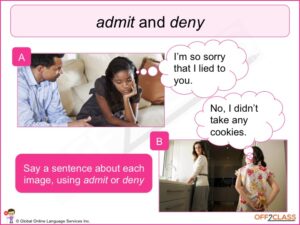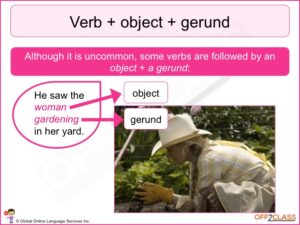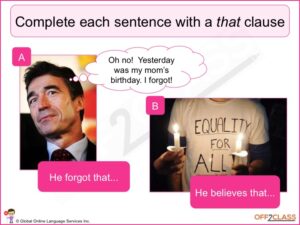5 min read
Share this post

Exposing a student to the correct complements that English verbs can take allows them to recognize these more quickly during self-study, and permits them to gain greater proficiency when speaking and writing.
I’ve released a 12-part series to teach the form and function of complements used after verbs, with a follow-on homework activity for each lesson.
And remember, if you are a subscriber to our site, you can contact me here for a free one-to-one videoconference about How to Teach Gerunds & Infinitives. I’ll take you personally through the lessons, answer your questions, and ensure you’re confident and ready to teach your student about this part of the English language.
We hope you enjoy the Gerunds & Infinitives category!
Introduction to Gerunds and Infinitives (G1.1 and G1.2)
Dancing is an excellent form of exercise.
I really don’t like running.
To graduate next year is my goal.
I can’t afford to buy those shoes.


Verbs followed by Infinitives and Gerunds (G1.3 to G1.5)
She agreed to write that letter.
He claimed not to have any money.
They admitted stealing the books.
You denied sending that email.
I prefer reading to writing.
I prefer to read than to write.


Verbs followed by an Object plus an Infinitive, Gerund or Bare Infinitive (G1.6 and G1.7)
I want to learn English versus I want you to learn English.
I advise you to contact your doctor.
He’s bought milk to make pancakes for breakfast.
She saw him fishing at the lake.
We appreciated receiving the presents.
I remember my mother cooking a lot when I was young.
We saw him throw the paper out of the window.


Verbs followed by either an Infinitive or a Gerund with a change in meaning (G1.8)
He stopped speaking versus He stopped to speak
I remembered to tell her versus I remembered telling her.
He regrets doing that versus He regrets to inform you about the bad news
Expressions followed by Gerunds (G1.9)
I’m having lots of difficulty completing this report
She had fun speaking time with her family.
Verbs followed by a That-Clause (G1.10)
He admitted that she wasn’t the best candidate.
We decided that it was too late to continue working.
She told me that I had failed the test.


Lesson G.11 provides practice with the forms and functions learned in the previous lessons.
Causative verbs (G2.1)
I had the painter decorate my new apartment.
He wouldn’t let us leave the house.
They made us stand outside in the rain.
The police got him to confess to the crime.
Share this post



Leave a Reply